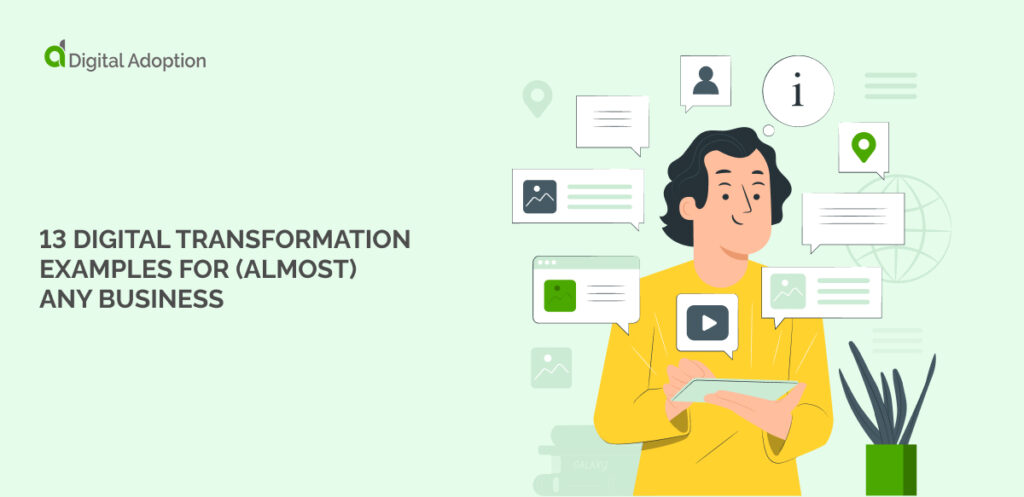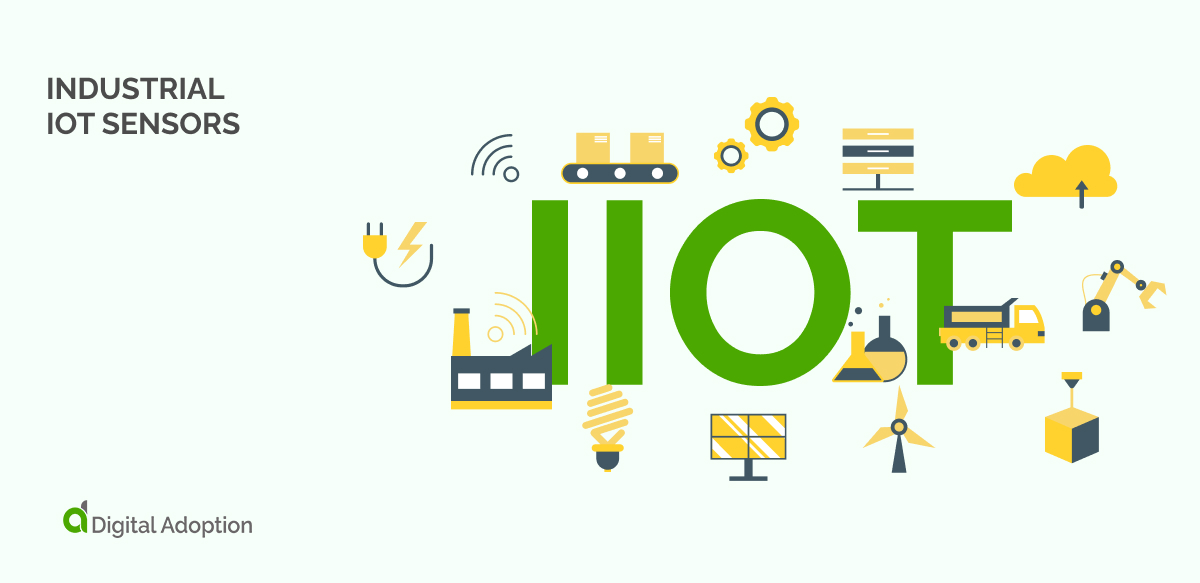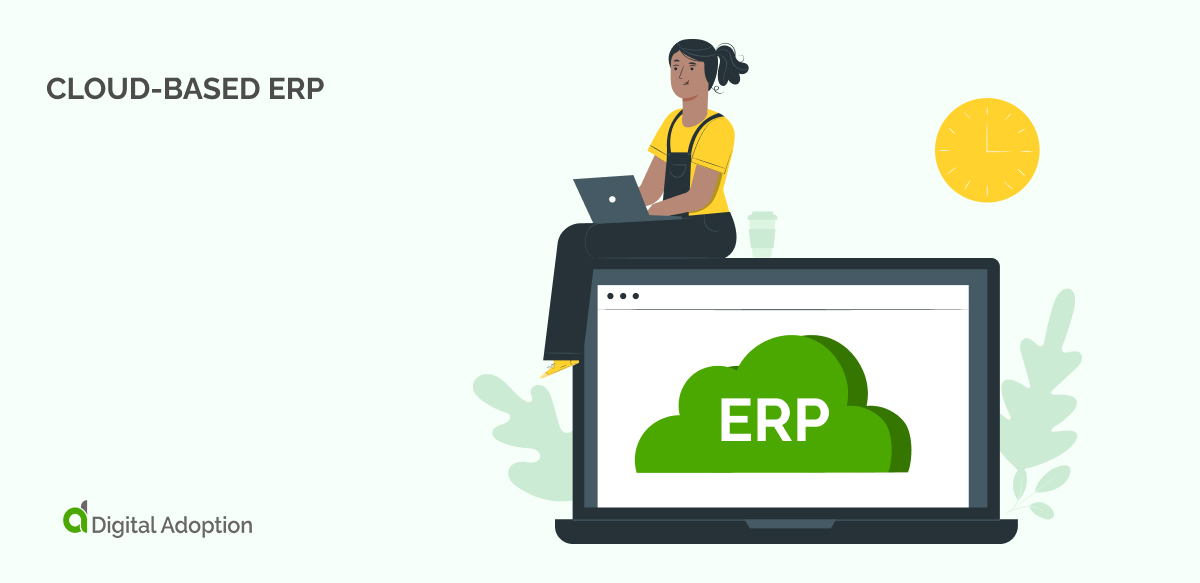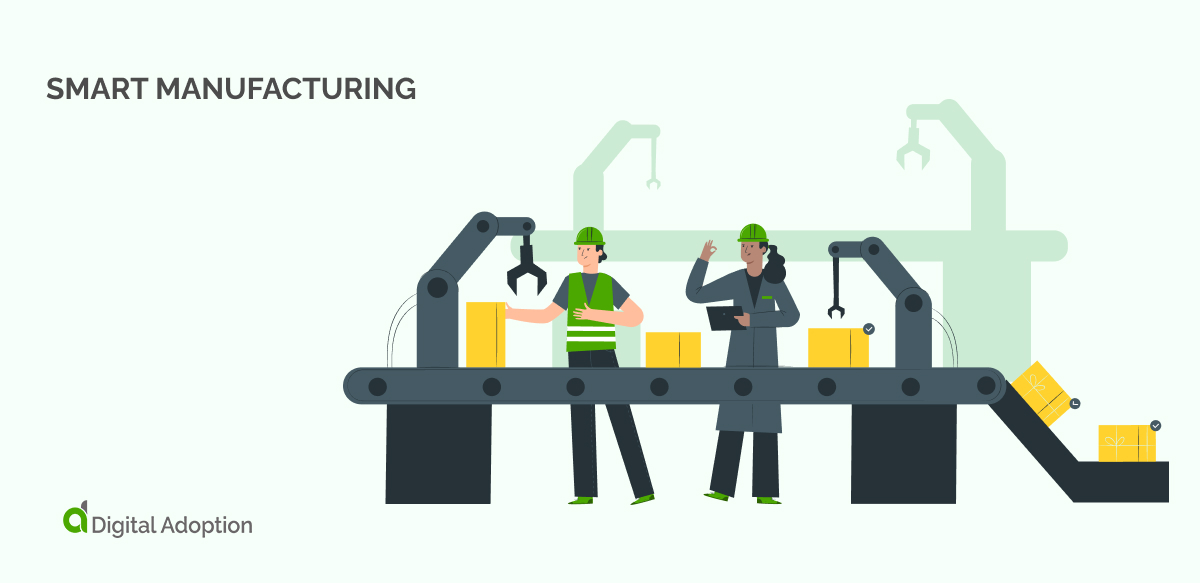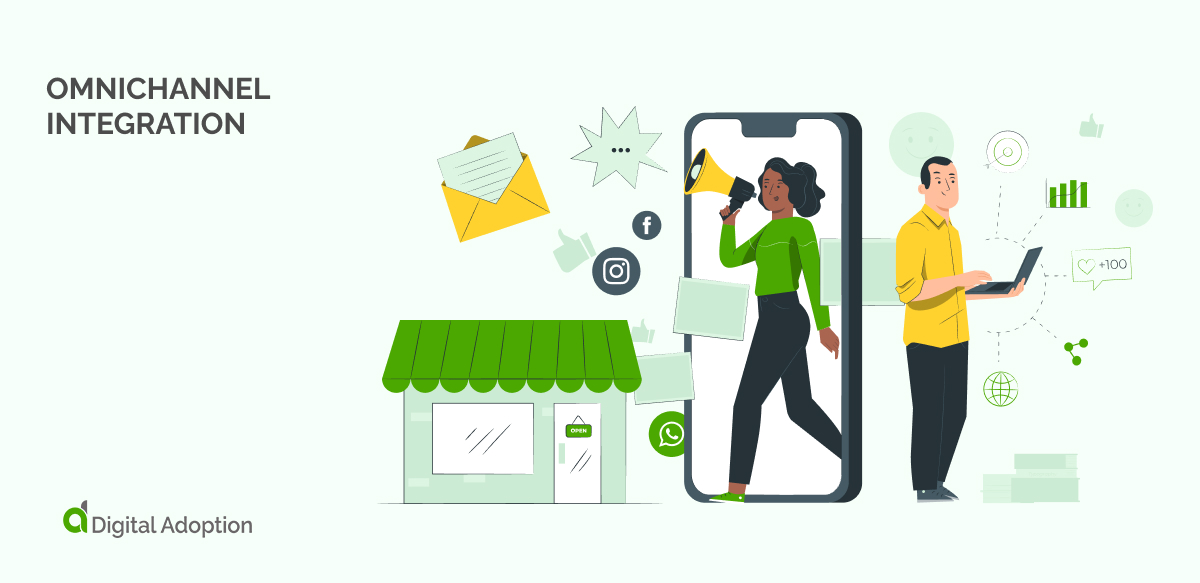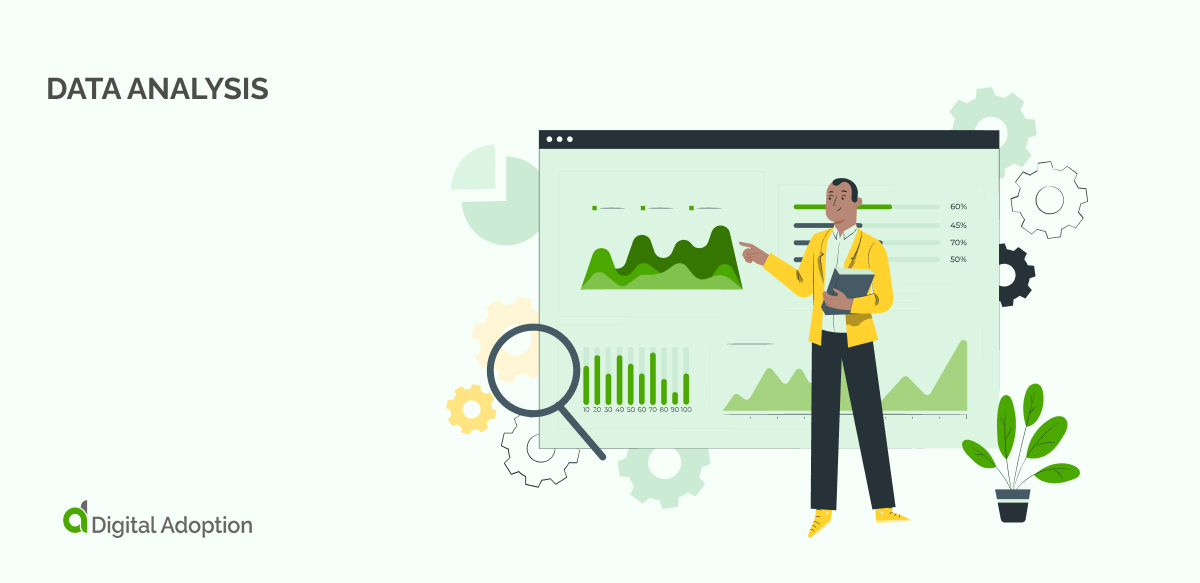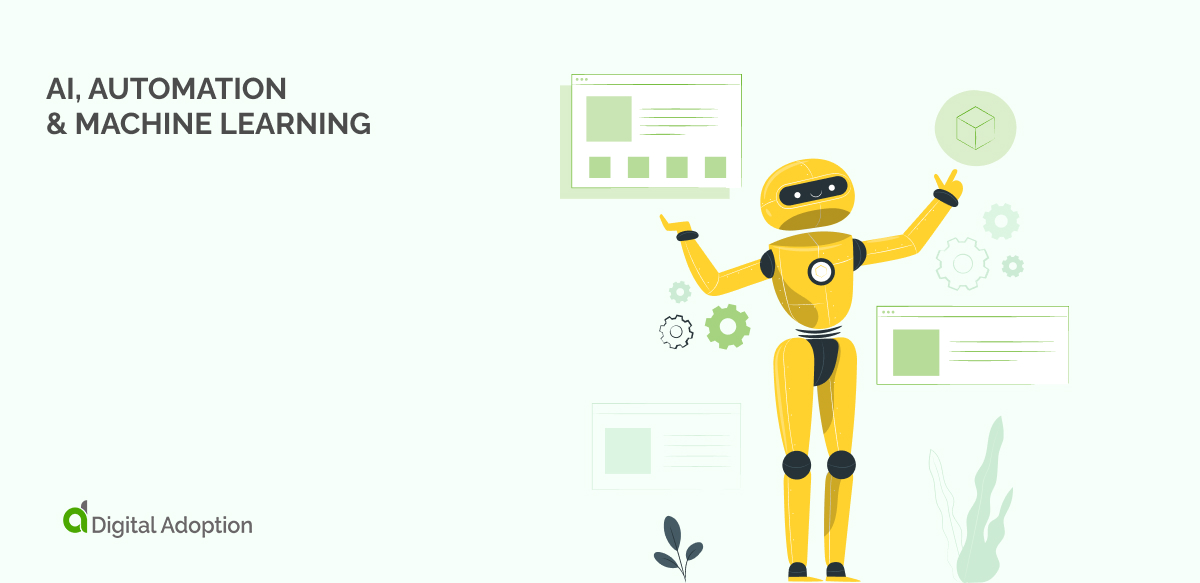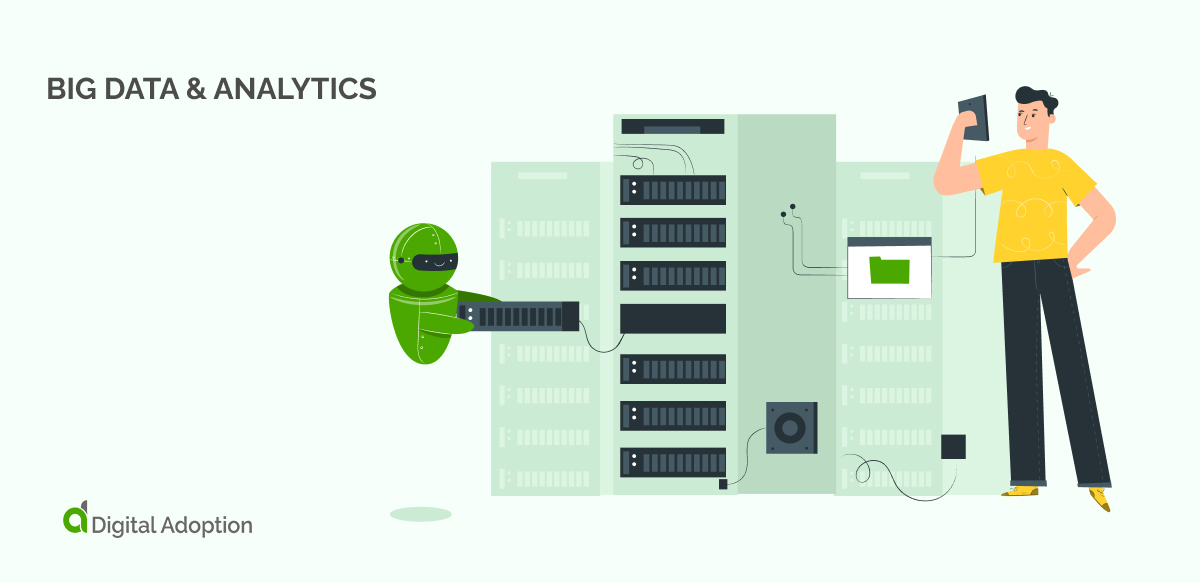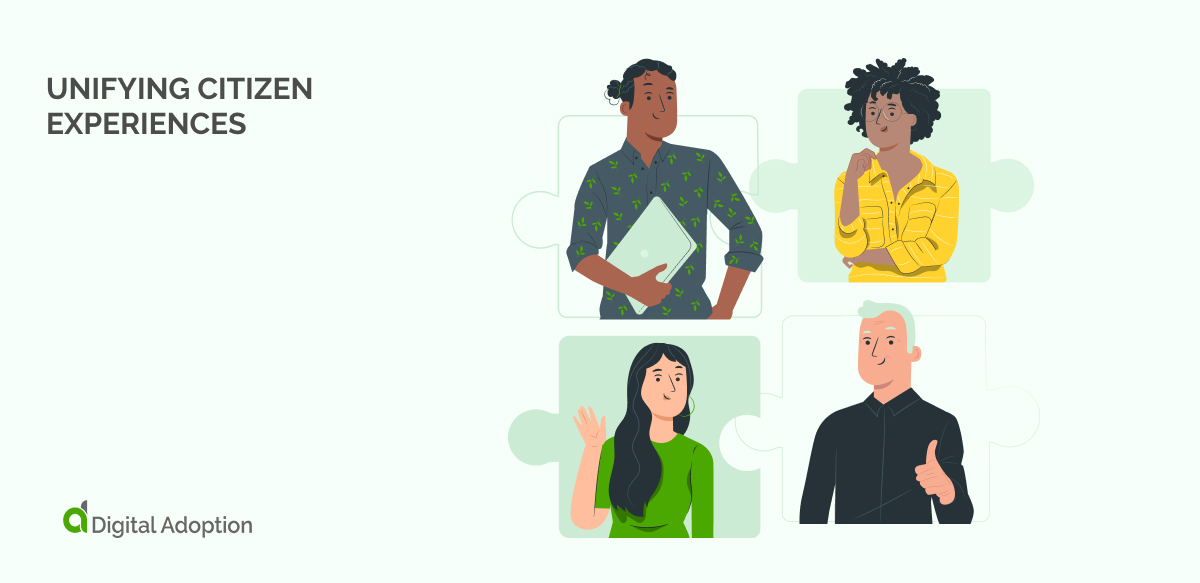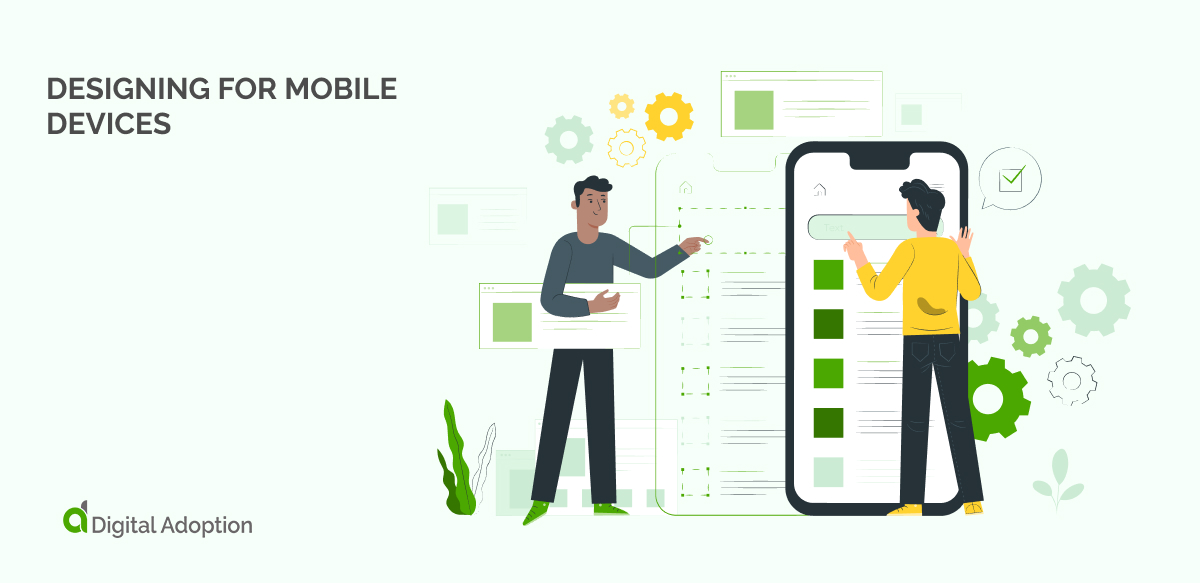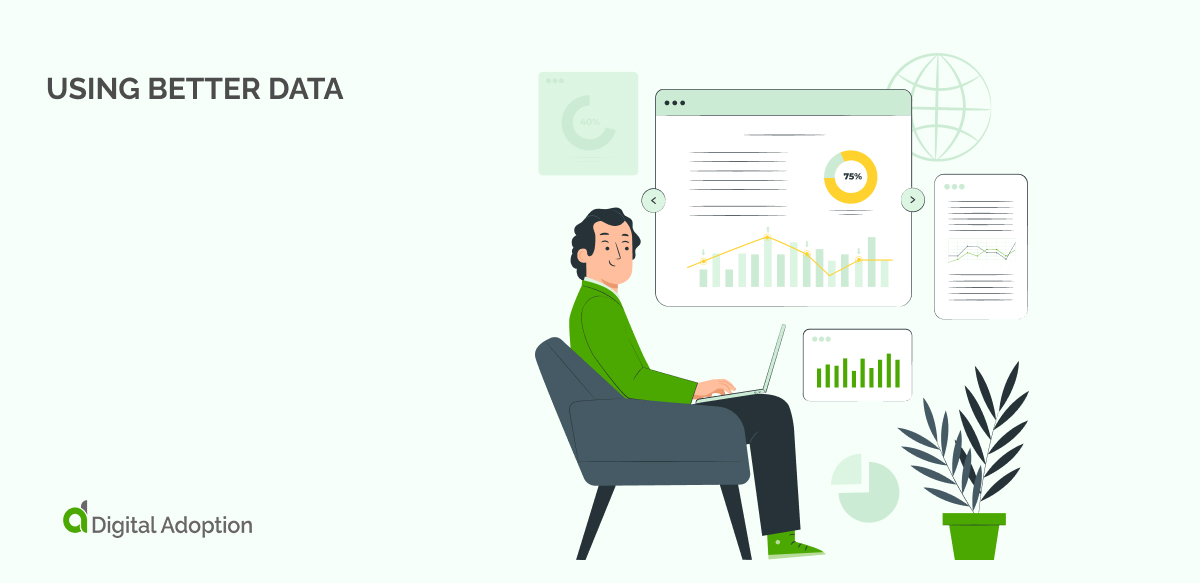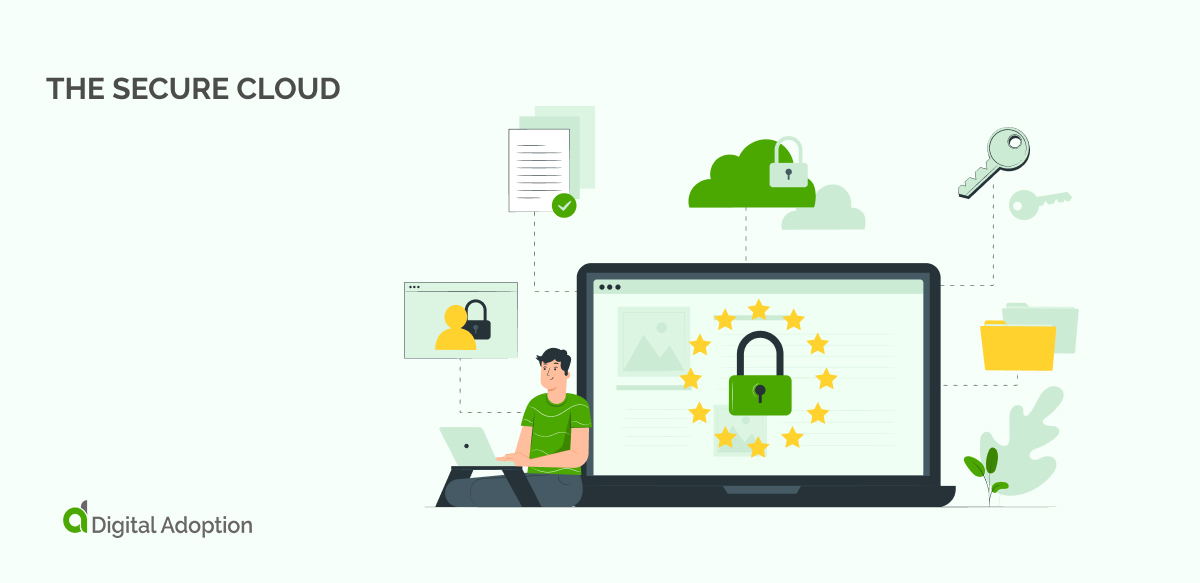Businesses need digital transformation to stay competitive in modern markets.
But every business is different, and the low-hanging fruit—the digital transformation initiatives that are most valuable and easiest to achieve— varies wildly across today’s vast landscape of businesses.
Does that make it impossible to learn from the examples of others?
Definitely not, for one key reason:
Businesses in the same industries often have the same low-hanging fruit.
In this article, we’re sharing examples of common, achievable, high-value digital transformations across these industries:
- Manufacturing
- Retail
- Banking
- Public Sector
If your business is in or aligned with one of these industries, you might walk away with a digital transformation idea that will drive the growth of your business.
We will also look at case studies of successful digital adoption within premier organizations— why not learn from the best?
Manufacturing
Companies undergoing digital transformation in the manufacturing industry often do so for two critical reasons:
- To improve production efficiency
- To revamp supply chain management
With these two motivations in mind, let’s take a look at some of the most common digital transformation initiatives carried out by manufacturing companies:
Industrial IoT sensors
An Internet of Things (IoT) sensor continuously monitors machines and systems to provide maintenance staff real-time data.
Rather than depending on periodic checks by maintenance technicians, IoT sensors serve as 24/7 “eyes” for critical assets.
IoT integration is often a valuable tool in digital transformation because of the amount of raw data IoT devices can collect.
The more data a manufacturing business can collect and process, the more minor efficiency adjustments it can make.
Cloud-based ERP
Cloud-based ERP (Enterprise Resource Planning) allows you to manage various aspects of your operations— including manufacturing, inventory, sales, accounting, and more— all from a single platform hosted on the cloud.
In the manufacturing industry, cloud-based ERP is particularly useful as it can help you streamline and optimize your production processes.
This type of system enables manufacturers to track and manage their inventory levels, schedule production runs, and monitor production lines in real-time.
With cloud-based ERP, manufacturers can also better manage their supply chains, which is critical given modern supply chains’ complexity and global nature.
Smart manufacturing
Smart manufacturing is a digital transformation initiative that uses advanced technologies such as IoT (Internet of Things), AI (Artificial Intelligence), machine learning, robotics, and data analytics to optimize manufacturing processes and increase productivity.
Smart manufacturing is also known as Industry 4.0— the 4th industrial revolution.
The key objective of smart manufacturing is to create a more connected, intelligent, and responsive manufacturing ecosystem that can adapt to changing market demands, customer needs, and supply chain disruptions.
Smart manufacturing can also enhance quality control, reduce downtime, and improve safety by leveraging predictive maintenance techniques that enable you to identify equipment issues before they occur.
Case study: Shanghai Research Institute of Building Sciences (SRIBS)
SRIBS is one of the largest professional service providers in the machinery industry, dedicated to technology consulting and manufacturing safety protection equipment.
SRIBS found itself in a position where it needed drastic digital transformation to catch up with market demands and combat rising labor costs.
SRIBS used IoT technology to transform the following areas of its production cycle:
- Asset tracking— IoT allowed the company to quickly locate any carrier and find its optimal route.
- People management— employees can receive and check messages in real-time on a kind of wristwatch. SRIBS improved productivity with additional applications such as attendance checking, work hour calculation, camera linkage, and inspection management.
- Safety control— SRIBS zoned their workshop into areas of danger and risk by electronic fencing. Employees would receive a signal via their wristwatch device when entering dangerous areas.
SRIBS reported higher output and greater sustainability due to these digital transformations.
Retail
Retailers need digital transformation to keep up with the changing needs of the modern consumer.
The modern consumer expects:
- Convenience, even if it costs extra.
- Personalized experiences.
- To be remembered.
Here are a few of the digital technologies that retailers are using to address those needs:
Omnichannel integration
Omnichannel integration enables new ways to buy from your business, like mobile apps and websites.
It’s a simple way to improve customer experience by removing the friction of buying from your store.
Data analysis
Collecting and analyzing customer data is essential to predicting how the customer journey evolves. Retailers often focus on data such as:
- Location data.
- Purchasing history.
- Social data.
This lets them make personalized recommendations and greet customers by name when they use digital channels.
Case study: Carrefour
By 2026, supermarket chain Carrefour plans to triple its e-commerce GMV (Gross Merchandise Value) by reaching €10bn.
They also predict digital technology will contribute an extra €600m to their ROI (Recurring Operating Income) by 2026 compared to 2021. These financial goals form Carrefour’s rationale for implementing a digital transformation strategy.
Carrefour describes four drivers they used to implement their digital transformation, driven by the values statement “data-centric, digital-first.”
These four drivers are:
- Optimizing E-Commerce— the faster-growing retail format in the wake of the pandemic.
- Boost Data And Media Usage— Carrefour created a business branch called Carrefour Links which now houses unrivaled first-party data in volume and quality, representing 8 billion transactions from 80 million customers worldwide.
- Digital First Approach— notably, Carrefour has focused on digitizing financial services and offering new finance and insurance products like Buy Now Pay Later options and micro-credit Affinity Insurance.
- Deep Digital Transformation— Carrefour started transitioning its information technology systems to the Cloud in 2018 as they migrated 30% of Group applications. Their goal is to be a fully cloud-based company by 2026.
This impressive digital transformation strategy has helped Carrefour establish itself as one of the leading supermarket retail chains in the world.
It’s also allowed them to create new services and offerings to drive further business growth.
Banking
No industry is more vulnerable to rapid market changes than the banking industry.
Banks and financial companies must learn to be agile and tackle market changes proactively. They need as much forewarning of shifting markets as possible.
There are a few digital tools that help banks see the future. Including:
AI, automation & machine learning
The adoption of digital banking depends on three core digital technologies:
- Artificial Intelligence
- Robotic Process Automation
- Machine Learning
Automation tools and machine learning work alongside AI to help eliminate repetitive tasks while maintaining high-security requirements.
Not only does this speed up banking transactions, but it enables more global collaboration between businesses and consumers alike.
Big data & analytics
The banking industry increasingly relies on big data and analytics to improve operational efficiency, drive growth, and enhance customer experience.
Big data refers to the massive amounts of structured and unstructured data generated by various sources such as customer transactions, social media, and other external sources.
Analytics is using this data to gain insights and make informed decisions.
Banks use this technology to make improvements to:
- Risk management
- Customer segmentation
- Fraud detection
- Product development
- Customer experience
And more.
Blockchain
Blockchain technology is a distributed ledger system that allows data to be stored and shared across a network of computers in a secure and transparent manner— instead of being stored in a single bank’s system.
Blockchain technology has the potential to transform the banking industry by:
- Enabling faster, more secure, and more cost-effective transactions.
- Improving identity management and compliance.
- Creating new opportunities for innovation and growth.
Case study: DBS Bank
In 2014, Piyush Gupta and his team devised a way to make banking joyful for customers of DBS Bank.
This is a tough goal in the face of public views of banks after the global financial crisis.
DBS closely examined lessons from successful technology companies and came up with the mnemonic GANDALF, which stands for:
- Amazon
- Netflix
- DBS Bank
- Apple
DBS inserted itself into the middle of this mnemonic to internally associate itself with the most successful highly-digital businesses out there.
GANDALF helped inspire a new mindset for DBS’s digital transformation. The bank identified and adopted five key initiatives:
- Stop producing products and shift to a platform-based model.
- Change how they develop teams so they’re high-performing and agile.
- Automate processes to speed up efficiency in building and deploying systems.
- Use cloud technologies to design modern systems that are scalable and adaptable for experimentation.
- Give employees the right resources and support so they can work agilely.
Public sector
Although the public sector operates under a different business model to for-profit organizations, it still needs to reduce financial waste and streamline business processes to ensure efficient capital expenditure for the citizens who fund it.
For this reason, public sector organizations still need digital transformation strategies.
That said, public sector businesses face additional challenges in securing initial funding for projects and being able to demonstrate long-term value.
Here are a few of the ways that public sector businesses have been known to tackle digital transformation:
Unifying citizen experiences
Unifying citizen experiences is all about improving accessibility and convenience.
No one wants to stand in a long line at the DMV.
But people do it because there’s no other option.
When they are given an alternative way to renew their license, their lives suddenly become a little easier.
This is why public bodies need No Wrong Door – a new approach for government services that focuses on customer experience by letting citizens do things their way.
Government services are now more accessible than ever before.
As of 2021, 90 different processes and forms can be accessed in one place for U.S. citizens online. This dramatic shift towards online contact channels reportedly generates over $308k of annual savings.
Automating manual processes
Government organizations are finding ways to offload manual processes from their employees as they transition into business process automation (BPA) solutions.
For example, the government’s internal process for preparing public meetings often requires a weeks-long review of paper documents.
Automated through digital technology, this can go from taking hours to minutes.
As well as improved efficiency, citizens can see what happened at any meeting, any time, online.
Designing for mobile devices
Mobile devices are changing the way that governments operate.
For hard-to-reach populations who may never have had access to computers or other forms of technology before now— their first impression is likely to occur on a smartphone screen.
Government entities must provide them with every opportunity possible by building responsive, mobile-first websites and applications.
Using better data
The open data movement has empowered governments and citizens by making information accessible to everyone.
City planners are better prepared for future decisions when they receive this new, democratic form of real-time governance via technology solutions like sensors or mobile apps.
They understand their environment better and make decisions based on what the state needs at any given moment.
Leaders in Culver City, California, used data from their communications software, govDelivery, to measure and improve citizen engagements.
Over the last year, they sent 2 million messages reaching 24 thousand residents who subscribe to topics that interest them most— this combination has resulted in 57% engagement rates, which beats government benchmarks by 12%.
The secure cloud
Many businesses consider cloud technologies as secure, if not more so, than on-premise solutions.
However, to ensure that public organizations remain safe from cyber threats and data breaches in the digital era, influential leaders must practice what is known as “security by obscurity.”
This means ensuring there aren’t vulnerable points within the cloud system where people can get into something harmful while evading detection.
Furthermore, public sector companies have to consider where any cloud systems they use are hosted and have to factor political relations into their decisions.
Case study: Government of South Korea
The public infrastructure development of South Korea is one of the best digital transformation examples in the public sector.
South Korea has been at the forefront of government technology for decades. They were one of few countries that introduced an Integrated Financial Management Information System (dBrain and e-Hojo), Human Resources Management Information System (eSaram), and finally, their workflow management system OnNaRA— which means “Government” in Korean.
In 2021, the South Korean government announced a “Digital Government Master Plan” to transform the country’s public services and administrative processes using advanced digital technologies.
The Digital Government Master Plan has three main objectives:
- Citizen-Centered Services: The plan aims to provide more citizen-centered public services by adopting digital technologies such as AI, big data, and the Internet of Things (IoT). This includes initiatives such as developing a national digital ID system, adopting digital signatures, and using chatbots and virtual assistants to provide more personalized services.
- Data-Driven Governance: South Korea aims to establish a data-driven governance system to provide policymakers with more accurate and timely information to support decision-making.
- Smart Administration: The plan aims to modernize administrative processes and enhance efficiency by adopting digital technologies such as robotic process automation (RPA), blockchain, and cloud computing.
Digital transformation examples: What’s the common thread?
Four major industries, 4 case studies, and 13 different examples of digital transformation.
Digital transformation comes in all shapes and sizes— but is there a common thread? An idea that underpins all digital transformation efforts?
Yes, there is, and it’s nothing new.
At its core, digital transformation is about people. Customers and employees.
How can digital technology be used to make their lives easier? How can it make their experience better? How can it solve their problems?
These questions are the common threads between any and every digital transformation. And while it might be simple, it isn’t always easy.
By learning from the best and following their lead, you can use digital transformation to grow your business sustainably and without having to figure everything out by yourself.

